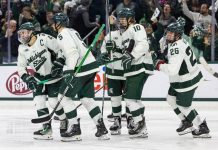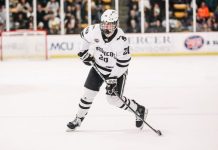I had a pretty good question from Matt Wellens the other day. He asked me how are the 3 and 4 seeds placed in either Manchester or Providence? He had asked this in reference to Minnesota-Duluth and why it was placed in either Manchester or Providence, since there is no geographic preference to UMD or Miami (as an example).
The answer is simple, but the process is not. And it also shows one that the placement process is much more complicated than it seems.
Because there is no geographic preference in this example of UMD or Miami, we have to look further down the placement process, to where teams sit in the second, third and fourth bands.
Having a great atmosphere by placing teams closer to their geographic regionals if at all possible is what the committee will try to do. Therefore, we try to match the seeds of UMD and Miami to the best placement further down the seeding chart.
Boston University is the overall number six at the moment. To keep bracket integrity, we want to pair it with the overall number three. Which in this case is UMD.
So we know that UMD and BU will be paired together in a regional.
Then after this, we take a look and see what the third and fourth bands look like and how we can maximize the opportunities.
Later in the Bracketology, I have decided that I want to bring Providence to the East Regional. Because I am doing that, I can’t have Providence playing a first-round game against Boston University. Therefore, Boston University must be placed in the Northeast Regional rather than the East Regional.
As a result of this, the pair of UMD-BU has to be placed in the Northeast Regional.
And that’s why I have placed UMD in Manchester rather than Providence.
Simple, yet complicated. Welcome to the PWR and the bracketing process.


